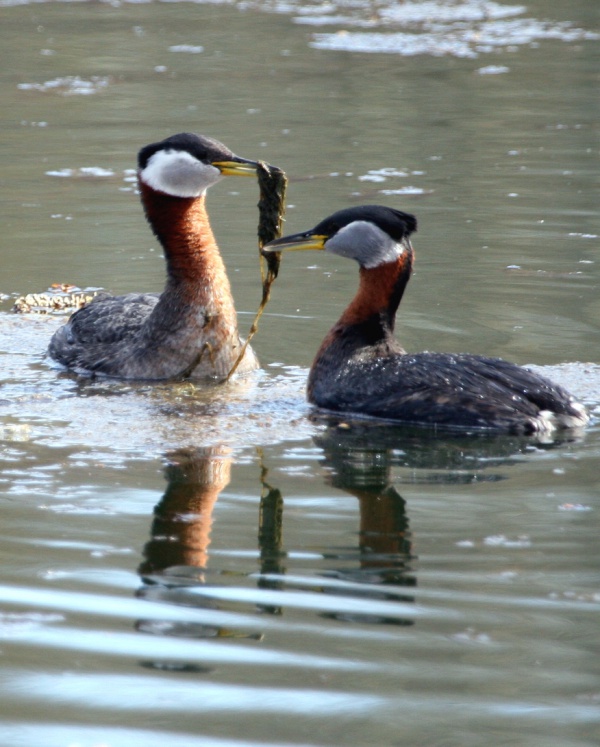Facts About Red-necked grebe
The red-necked grebe is a fascinating migratory bird that thrives in temperate regions of the Northern Hemisphere. During the winter months, they are often found in calm waters near ocean coasts or large lakes. When it's time to breed, they migrate to shallow freshwater areas such as lakes or marshes. In winter, their diet mainly consists of fish, which they catch by diving, or insects they pick off vegetation.
Belonging to the genus Podiceps, the red-necked grebe has two subspecies. It was first described by Georges-Louis Leclerc, Comte de Buffon, and later classified by Pieter Boddaert in 1783. Grebes are known for their lobed toes, which make them excellent swimmers and divers. The red-necked grebe is closely related to the great crested grebe.
In terms of appearance, the red-necked grebe is medium to large in size and displays striking breeding plumage, featuring a black cap, red neck, and grey face. They are also known for their unique courtship displays and various mating calls. During the breeding season, they build nests on floating vegetation and are particularly vocal.
These birds prefer breeding in shallow freshwater areas with abundant emergent vegetation. They are migratory and spend their winters at sea, often in estuaries or bays. While mostly silent outside the breeding season, they can migrate in large numbers. Despite facing threats from predators, pollution, and habitat changes, their conservation status is currently evaluated as Least Concern.
In breeding, red-necked grebes either nest in isolated pairs or semi-colonial groups. They perform elaborate courtship rituals and build floating nests near water. Both parents share the responsibilities of incubating the eggs and caring for the young. Their diet includes invertebrates, fish, and crustaceans, which they catch by diving or swimming. Interestingly, they also ingest feathers, possibly to protect their digestive systems.

 Russia
Russia